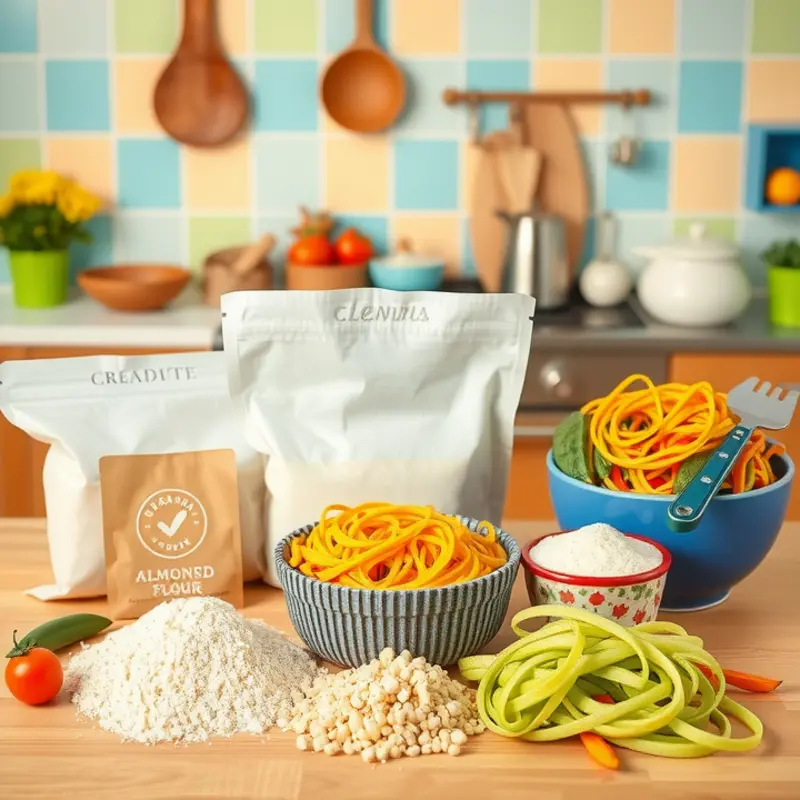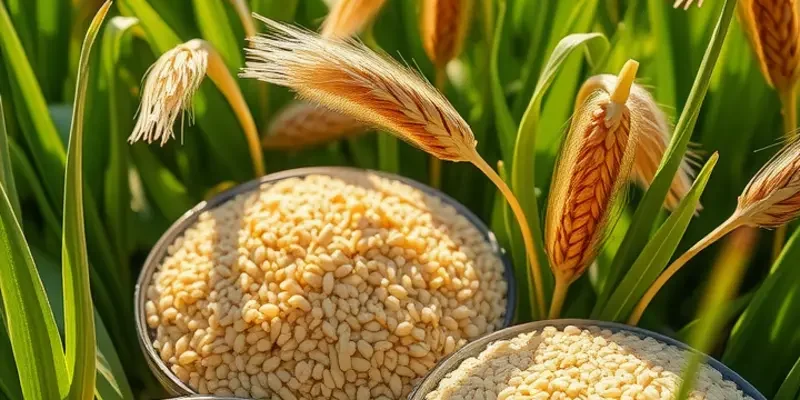For those avoiding gluten, finding suitable grain replacements can transform meals without sacrificing flavor or nutrition. This guide explores practical ingredient choices and easy substitutions, making it easier for home cooks and dietary-conscious individuals to enjoy delicious, gluten-free dishes. Discover how to navigate the world of gluten-free grains with simple strategies to keep your meals nourishing and satisfying.
A Spectrum of Gluten-Free Grains

Transitioning to a gluten-free lifestyle can open up a world of diverse grains. These grains not only compensate for wheat but also enrich your culinary repertoire with unique flavors and textures.
Quinoa, celebrated for its nutritional prowess, is an ancient grain originating from South America. With its nutty flavor and fluffy texture, quinoa is a versatile ingredient for salads, soups, and even desserts. A complete protein containing all nine essential amino acids, quinoa requires a simple rinse to remove its natural saponin coating before cooking. Simmer it in a 2:1 ratio of water to grain for about 15 minutes until tender.
Rice, a staple worldwide, exists in numerous varieties. Brown rice, packed with fiber and nutrients, offers a chewy texture and nutty taste. Basmati and jasmine rice, known for their distinct aromas, are perfect for pilafs and stir-fries. Cooking rice involves rinsing to remove excess starch and boiling in water until the water is absorbed. For more tips on speedy meal prep, you might find this minimal prep dinner ideas guide useful.
Millet, often underappreciated, is a small and round grain with a mild corn flavor. Naturally gluten-free, it’s versatile in sweet or savory dishes. Toasting millet before cooking enhances its nuttiness. Use a 2.5:1 water-to-millet ratio and cook for about 20 minutes. Its subtle taste makes it suitable for porridges, side dishes, and gluten-free breads.
These grains not only vary in taste but also in nutritional benefits. Quinoa is rich in iron and magnesium, while rice provides a good source of B-vitamins. Millet stands out with its high magnesium content, supporting bone and heart health.
Experiment with these grains in baking, where they can replace wheat flour. Quinoa flour enhances the protein content of baked goods, whereas rice flour provides a neutral taste. Millet flour contributes to a moist texture in bread and muffins. For thickening sauces or gravies, a mix of these flours can work wonders, adding both consistency and flavor.
Flavor-wise, consider pairing quinoa with zesty and herbaceous ingredients, rice with spices like cinnamon or saffron, and millet with earthy flavors. These pairings can elevate your dishes, providing depth and richness without the need for gluten-containing wheat.
Utilizing these gluten-free grains transforms meals into vibrant, nutrient-rich culinary experiences. Their varied profiles allow you to innovate traditional favorites or explore new recipes, ensuring that your diet is both satisfying and health-conscious.
Creative Substitutions for Everyday Cooking

Gluten-free cooking doesn’t mean giving up the joy of vibrant, varied meals. Replacing traditional wheat products is a delicious journey into exploring alternative ingredients that can redefine culinary boundaries. Let’s begin by looking at some practical substitutions that will keep your meals both exciting and nourishing.
Start with flour. Almond flour is a fantastic replacement. Made from finely ground blanched almonds, it is rich in protein and healthy fats. It works beautifully in baking, offering a moist texture to cakes and muffins. To replace wheat flour, use a 1:1 ratio, but consider adding an extra egg or binding agent to prevent crumbly results.
Chickpea flour, also known as gram flour, brings a nutty flavor to the table. It’s an excellent choice for savory recipes like socca or gluten-free pasta. Depending on the recipe, you may need to adjust liquid levels, as chickpea flour can absorb more moisture than wheat flour.
Now, dive into the world of gluten-free pasta. Rice noodles offer a neutral flavor and versatile texture. They’re perfect for both Asian-inspired dishes and as a base for classic pasta sauces. However, if you’re aiming for something more hearty, try pasta made from lentil or quinoa flours. They are richer in protein and fiber, making your meals more filling and nutritious.
Bread remains a staple for many. If you’re missing that satisfying slice, consider making bread from a blend of almond and coconut flours. This combination maintains a lightness and prevent the denseness often associated with gluten-free bread. For those preferring pre-made options, many grocery stores now stock a variety of gluten-free bread choices that don’t compromise on taste or texture.
Cauliflower rice has made waves as a low-carb replacement for traditional grains. Simply pulse raw cauliflower in a food processor until it resembles rice. Cook it with a hint of olive oil or turn it into a zesty pilaf by adding spices and herbs. This option is not only gluten-free but also adds a nutritious vegetable boost to your meals.
Additionally, you can explore more gluten-free substitutions to enhance the flavor of your dishes. For some inspiration, check out this guide on cooking without gums for additional tips on how to substitute ingredients that often accompany gluten-free flours.
Incorporating these gluten-free alternatives into everyday cooking can be seamless and rewarding. With the right substitutions, your meals will keep the same level of taste and satisfaction, if not surpass it. Experiment with these ingredients to bring innovative twists to your favorite recipes, turning gluten-free cooking into an exciting and delicious adventure.
Final words
Navigating the world of gluten-free grains doesn’t have to be daunting. With a variety of replacements available and practical substitution tips, home cooks can easily adapt their favorite recipes to be gluten-free. From wholesome grains like quinoa and rice to versatile flours such as almond and chickpea, the options are plentiful. By embracing these alternatives, you can create tasty meals that everyone will enjoy, while maintaining a healthy and dietary-conscious approach to cooking. Remember that experimentation leads to the best results, so don’t hesitate to try new ingredients and techniques in your culinary adventures.







